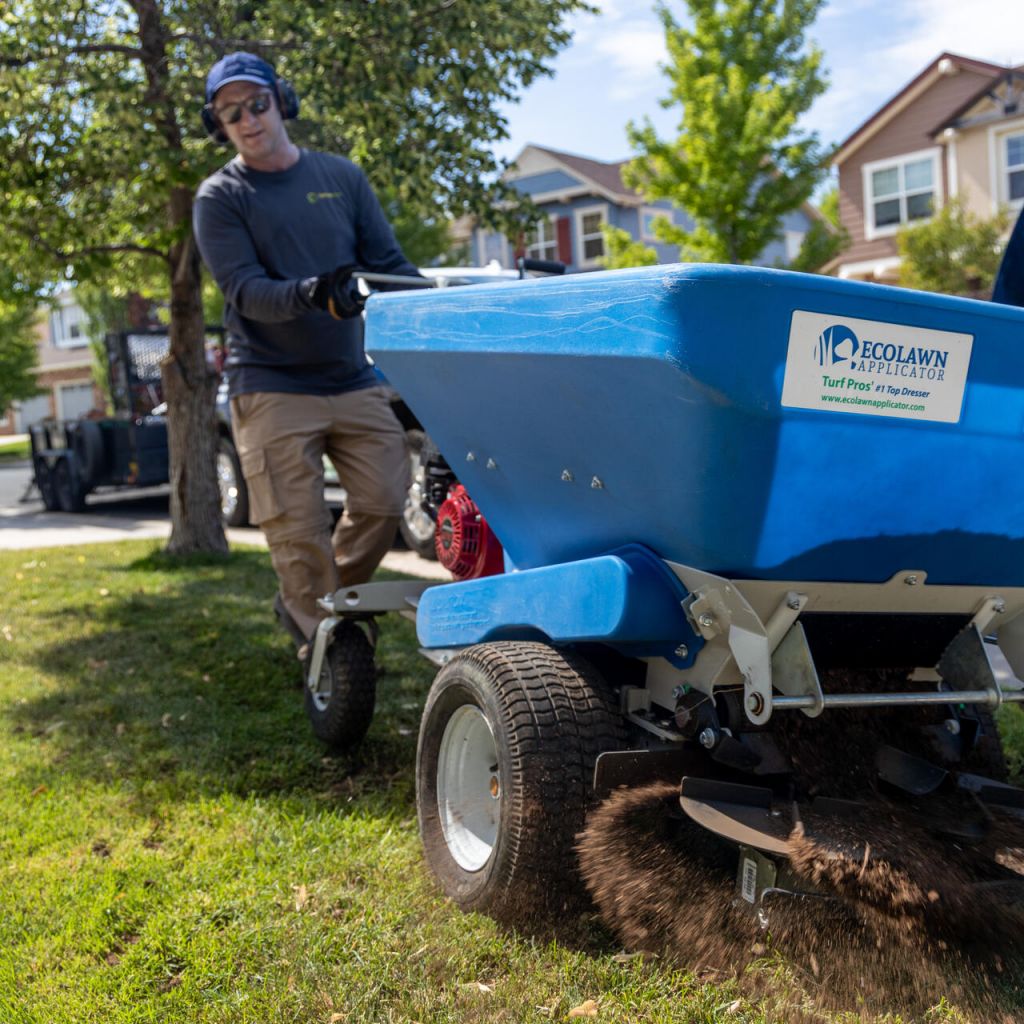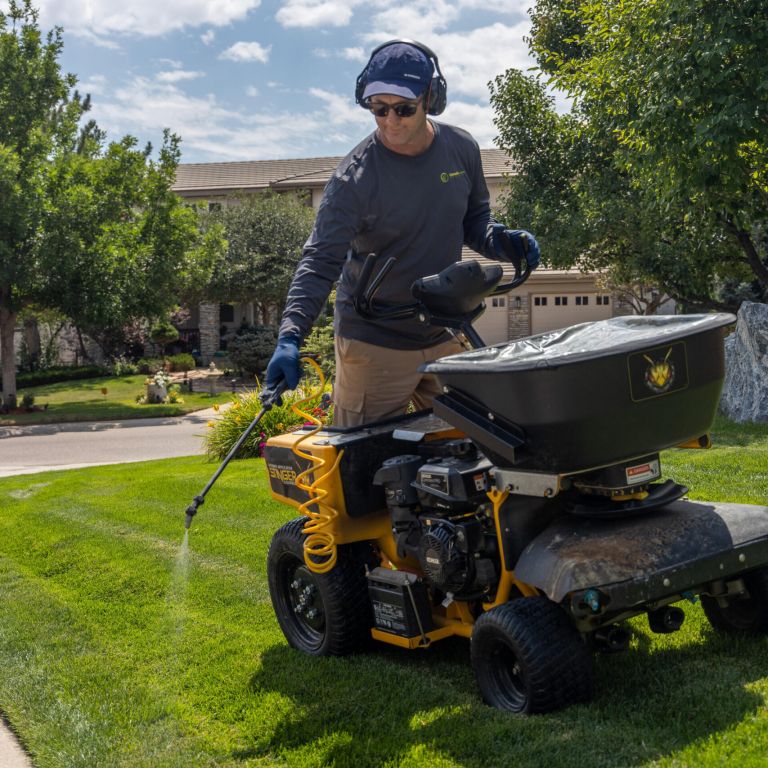Overseeding
What is Overseeding?
Overseeding is a process of adding seed to an already established lawn. Overseeding can fill in thin or sparse areas left by drought, fungal or insect damage or just make a healthy lawn more lush and beautiful.
Grass is a living organism, and while it seems that a lawn properly cared for with fertilizers and good care habits will be everlasting, this is really not the case. Old grass dies and new grass takes its place. There is a natural decrease in the reproduction of turf over time and overseeding can revitalize an older and thinner lawn. New grass seedlings are naturally more resistant to disease and insects. Also, a thick and dense lawn doesn’t leave room for weeds to move in.

What type of seed is best?
We use RTF (Rhizomatous Tall Fescue) seed. This amazing seed ticks off all the boxes for Colorado lawns. Strong roots make for a great long-term solution that is soft to the touch and pleasing to the eye. These hardy roots resist disease and holds up in sun or shade, while providing a soft cushion for the kids and dogs.
- Turf Saver RTF is a fescue grass that looks like Kentucky Blue grass but thrives in our desert climate.
- Requires less water to maintain
- Does well in both sun and shade
- Results in a thick, even lawn with a rich green color
- Strong and hardy root system aids in self-repairing turf
- Excellent for high traffic areas making it ideal for pet owners
- Resistant to common lawn diseases, including fungus
- Colorado Approved!
This is a soft fescue grass that resembles Kentucky Blue but is better suited for our climate. Requiring less water and all-around maintenance, the dark green color and softer blades will make you the envy of your neighbors!
When should I Overseed?
The optimal timing to overseed your lawn is in the spring or fall when the temperatures are moderate. Any seeds that do not germinate in the fall will do so after the dormancy period the following spring. You can really seed at any time of the year but the watering requirements make it cost prohibitive in the warmer months. Once you seed your lawn, you don’t want the seeds to dry out. We recommend watering 10-15 minutes per zone, 2-3 times daily for 4 weeks after a seeding.
For the best results when you seed your lawn we suggest the following:
- Do not use pre emergent or post emergent weed control for 12 weeks prior to or following a seeding. Weed control should not be applied until after seed has germinated and the lawn has been mowed at least twice.
- We recommend watering 10-15 minutes per zone, 2-3 times daily for 4 weeks following a seeding. However, on warmer days, additional watering may be necessary in order to compensate for evaporation.
- Leave any thatch that is dislodged on the lawn if possible – while a bit unsightly, it acts as a natural protection for the seedlings.
- We also recommend a “Starter” fertilizer with your overseeding to maximize nutrients and cell wall structure. Bear in mind that while you seed you want optimal growing conditions, i.e. lots of water and nutrients and nothing to prevent the seedlings from flourishing. Unfortunately, prime turf growing conditions are also great weed growing conditions. You might see the weeds start to grow right along with your grass. If that is the case, we can treat them with a post emergent once it is safe for the new seedlings to do so.
- Keep foot traffic to a minimum.
- Do not mow until your grass has reached a height of about 3 inches.





